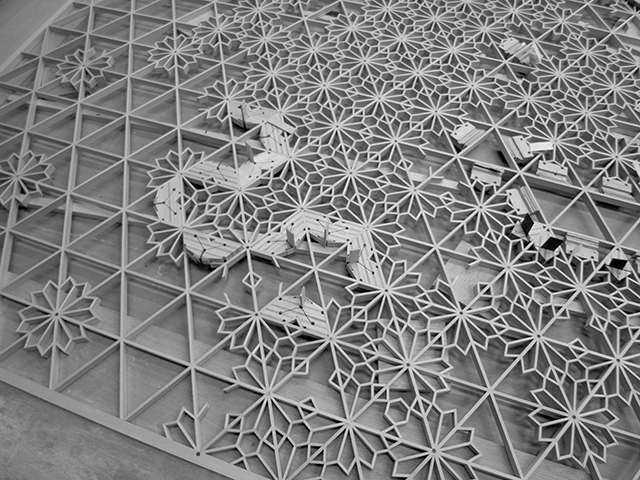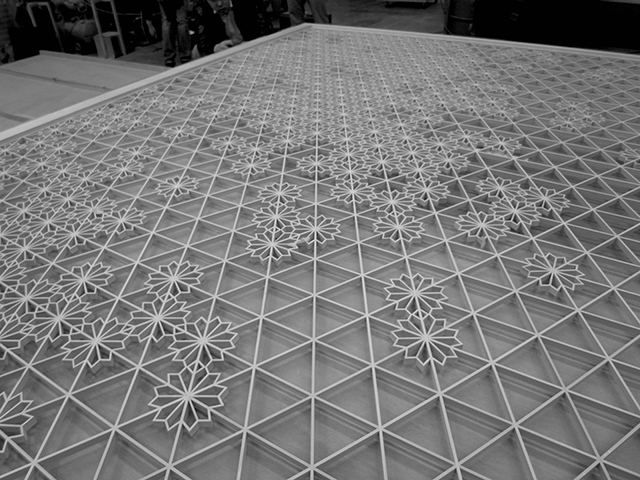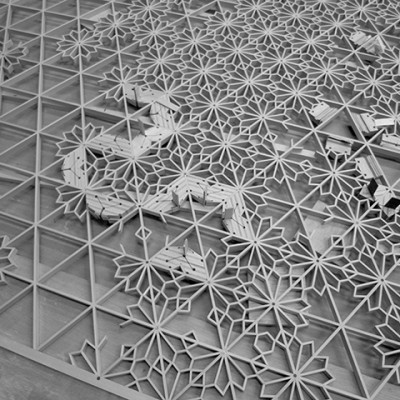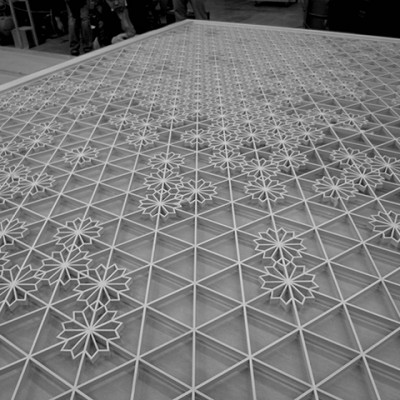組子 | kumiko/
組子細工とは、釘や接着剤を一切使わず、木と木を組み合わせて様々な模様をつくりだす技術です。
加工には非常に繊細な技術を要し、わずかなズレが全体の仕上がりに影響してしまうため、0.001ミリ単位を感覚で判断しなければなりません。その様は機械をはるかに超えた世界で、それぞれのデザインに合わせた角度や長さの調整など、熟練した職人の腕が必要です。歴史は古く、飛鳥時代から日本の建築物に見られ、最古のものでは法隆寺の金堂、五重塔、中門の高欄などがあります。室町時代になると障子の桟に組子の装飾が施された建具や欄間が見られる様になり、古くから日本人の生活に関わってきました。長い年月をかけて職人たちが守り、引き継いできた組子技術。現代では、デザインは200通り以上あると言われ、組み方も職人によってさまざまです。光や影の表情から空間をつくりだし、四季の移り変わりを感じることが出来る、日本建築が生んだ独特の技です。
KUMIKO woodwork is the technique which precisely puts small wooden parts together, consisting some design patterns with NO nail or glue at all.
This technique requires quite high level of preciseness as exact as 0.001mm because just a little error could ruin the whole work.
This handcraft technique of KUMIKO is far beyond the machining work. Precise and delicate adjustments to be done manually in angle and length for each design by skilled craftsmen.
KUMIKO work has its long history since as old as Asuka-period(592-710), which had been used in Japanese buildings. The oldest KUMIKO works are in Horyuji Temple in Nara: Kondo(Golden Pavilion), Gojyu-no-Tou(Five-storied Pagoda), and Chu-Mon(Middle gate).
In Muromachi period(1336−1573), KUIKO works became into daily lives of the people at those time, seen in interiors such as Shoji(sliding doors) and Ranma(decorative transoms) with KUMIKO work.
In such way, KUMIKO technique has come along closely to Japanese people.
KUMIKO can be said one of a "very Japanese" technique - Produce a space of an atmosphere by sensitively manipulating the light and shadow by KUMIKO, even a hint of changing seasons included in there.
Now the design of KUMIKO is more than 200 existing, and also the pattern has wide variations on craftsmen.




